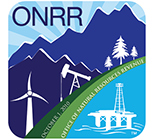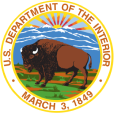Strategy
Major website redesigns must be approached carefully if they are to succeed in improving the public’s experience with the site. Agencies must consider:
- What, exactly, they need to improve about their current website,
- What tools they will be using on the new website, and
- How they will be approaching the milestones for the overall effort.
Each of these considerations can have an impact on search engine optimization. Here we discuss details of each phase, outline the potential impact on search, and share the experiences of our partner agencies.
1. Baseline site assessment: Customer experience and usability researchers
Impact on search
Baseline usability research reveals the strengths and shortcomings of the current website, including the search function. It highlights gaps in findability, which will show
- Needed changes to information architecture or updates to content;
- The need for more metadata for content; and
- Updates to the search experience, to help people find what they need.
Redesigning a website is a journey. Like all journeys, you have to know where you are starting from.
Ideally, a usability research team will conduct tests with users and review the current state of the website, including content and governance. This allows them to develop a clear picture of how people think about the website, what they are trying to accomplish with it, what they find easy, and what they find challenging.
This is true for both usability and governance review. This information will outline the path ahead and ensure the team improves the public’s experience, while keeping features that already work well.
However, this type of dedicated research requires resources, and not all web teams have access to usability research tools and participant pools. Budget or software approval requirements may constrain access. These teams can still do meaningful research using modified or combined methods, such as card sorting, behavioral research, user interviews, and web analytics review. Card sorting, for example, uses online tools, or is done in person with paper cards. This activity can influence navigation design as well as search experience design, offering categories that will match more closely how people understand the website.

The United States Social Security Administration
SSA.gov
SSA.gov is among the most prominent websites in the federal government. Like with other assistance programs, people come to the SSA website seeking support during significant life events, and need to return over time. SSA’s website redesign needed to make it easy for people to find and complete the transactions that will get them access to their benefits. First, they conducted focus groups and user interviews to understand what people need, both from the website and from SSA in general. Their goals were to learn how people interact with SSA’s online services, and to assess how quickly people could find various transactions.
To assess ease of task completion, they conducted usability tests on both the legacy website and the new website, to compare the two experiences and ensure that the new website was easier to use. They also conducted user interviews around specific sections of the site, such as the retirement and Medicare sections, to learn what people are looking for on those topics. They reviewed web and search analytics for the legacy website and the beta website, and used online survey tools to gather feedback from users.
By launch time, they had conducted 75 user research sessions, 100 user interviews, and had collected thousands of feedback responses on their Beta.SSA.gov website, which was available for a nine month period. They used the results of their usability research to develop a new site architecture based on the public’s understanding of SSA services and information. The new architecture is based on three phases of the benefits journey: prepare, apply, and manage. They also restructured the homepage to use these phases to help people move more effectively through this journey. They fine tuned content across the site, and made significant changes to their Retirement and Medicare sections based on findings from the research.
Following the re-launch, they are still engaged in usability research. They are continuing to review web and search analytics, feedback survey responses, and conducting user research and usability tests. They’ll use new findings to further inform improvements to the website over time. In their own words, “We’re still learning.”

Office of Natural Resources Revenue
ONRR.gov
To begin the redesign of ONRR.gov, ownership of the website was transferred to the Open Data, Design, & Development (ODDD) team to leverage their experience with user-centered design and open source technologies on public websites. Because the website was new to this team, they first needed to understand the current site fully. They conducted a content audit, and reviewed previous survey results and web analytics. From there they framed a problem statement for the website as it was, and a vision for the future. They set up a round of research to discover user needs. This included usability testing to learn how people approached the structure of the website, and the information on it. They used moderated card sorting and tree testing techniques, and later gathered feedback on draft wireframes through user interviews. They used a networking approach to identify potential participants.
During the first round of testing, they discovered a strong need they had not known about before. People come to the website to locate contact information in order to ask specific questions. This was both a top task for users of their website, and one of the primary pain points in usability, because of how contact information for different offices was distributed on the site. The team recognized this as both a usability issue for the website, and a customer experience issue for ONRR. Based on this finding, they focused on decreasing the time it took to locate the right contacts. They conducted a design studio and eventually developed both a troubleshooting guide and a new contacts search page with a variety of filtering options.
In addition, their research produced rich usability and experience data that prompted them to reorganize the information architecture, rework handbooks, redesign the data table interaction experience, expand use of plain language, and ensure that all features and documents were fully accessible and compliant with Section 508. By the end of the research, they had interviewed about 150 people, including ONRR employees, federal staff from other agencies, and industry stakeholders. They let the usability findings guide design and development, and influence further changes if they saw people were struggling with a feature. They said, “We let the research make the decisions for us.” Their studies and findings are available on GitHub.
2. Content management system or publishing platform choice
Impact on search
Search engines are programmed to collect data and content in specific ways, and each one is different. Presenting relevant information about a page in the HTML elements that the search engine is looking for will help the page rank appropriately in results. Search engine optimization (SEO) is the practice of tailoring the elements placed on a page and the information included in them to support search engine bots’ data harvesting. Different content management systems provide different levels of SEO support.
Early in a site redesign, you need to decide what tool, or tools, that the new website will use. The tool has implications for everything in a design:
- The public experience of using the site;
- The team managing the site’s content and technology; and
- The site’s security, compliance, and authorization to operate.
Some agencies have a central team managing a shared content management system (CMS) environment. Agency policy may require websites to migrate into the shared platform, or may allow websites to not use the system
Different content management systems bring different approaches to publication workflows and feature enhancements. Some systems have robust SEO plugins that transform a page’s content and metadata into the right structures and make it easier for search engines to collect and rank the page in results.
On the other hand, some systems automate very little of this transformation, so the web team must write the code that makes it happen, or decide to go without these important SEO boosts. When evaluating new content management systems, we advise partners to select one where there are feature-rich SEO plugins available.
Choosing a new publishing platform may or may not include choosing a new content management system. It may simply involve choosing a new version to upgrade to. Even so, different versions of the same content management system may have different SEO support options. Some sites choose to migrate to a new platform without redesigning the site at all.

Department of the Interior
DOI.gov
For the Department of the Interior, many internal and external factors influence the timing of when they upgrade their website. While they knew they would upgrade and stay within the same system, the uncertain timeline meant they needed to decide which major version they would upgrade to.
If they chose the earlier version, they needed to balance between a version that has been available long enough to complete minor updates, but not so long that that version’s end of life date was imminent. No agency likes to be forced into an immediate next upgrade.
Moving directly to the next version too early may mean that that release isn’t fully stable. As with all major version changes, the two versions had significant differences. They have different features requiring different work required to upgrade them.
The team would need alternative upgrade plans depending on what version they finally chose. In the end, they chose to move to the newer version, looking at the likely production release date and the earlier version’s end of life date.
3. Relaunch path selection
Impact on search
Update the search index when you launch the new website. If you relaunch your website in multiple waves, you will need to reindex the site with each wave, to ensure that search results stay correct.
You have two primary ways to relaunch your website: big bang or phased:
- Big bang — relaunch the entire website all at once, or
- Phased approach — launch parts of the website incrementally.
Consider the website’s size and complexity, and agency goals for the relaunch.
Another factor is the scope of the team that manages the website. Most agency web teams are responsible for a single website. Some teams manage the publishing platform for multiple sites, but do not own the sites themselves. These multi-site environments often publish the individual sites on different subdomains. In these cases, relaunching one subdomain is managed separately from the others. A given subdomain may relaunch in waves, or all at once, depending on size and complexity.
For phased relaunches, the team must decide how much content to move in each wave, and what will happen with the old content, if anything. Some agencies choose to move just a portion of their content, and leave the old pages entirely alone until they have been migrated into the new system. Other agencies choose to move just a portion of their content into the new system, but update the look and feel of the old system to match the new site’s design.
Consider an agency’s web archiving policy. Some agencies archive their website every four years and launch a new one as a matter of course. Some agencies relaunch and archive less often. Some agencies relaunch without a separate public archive site. When agencies maintain a separate archive website, it needs to be searchable.
Any legacy information related to current programs must be updated and included on the new website as well.
We have worked with agencies who have moved the most current available information about an issue into their archive, and then experienced challenges getting it to show up in search. Some agencies choose to provide an archive-specific search; some agencies include the archive site as an alternative within their main search. In either case, agencies need to support searchers as they move back and forth between the two environments in case what they're looking for is stored on the other website.

Health Resources and Services Administration HRSA.gov
The Health Resources & Services Administration (HRSA) team manages multiple subdomains as components of the larger HRSA.gov website, 12 sites in total. Each subdomain has distinct content, audiences, and subject matter experts. They chose to approach their overarching redesign as one project with multiple phases for the component websites. They created an overall project plan and calendar, considering each site’s size, complexity, and the priorities of the relevant bureaus and offices.
For each subdomain, they took a big bang approach, relaunching all content on that subdomain at once. The phases overlapped each other, so that when one site got past the content review stage, the team would start work on the next site. Importantly, with the rolling subdomain approach, they took time to learn from each launch. They were able to apply lessons learned from one wave to the next, making each round an improvement over the last.
They contacted our team at the beginning of their redesign process to review plans, and we offered feedback. When they had implementations in place, we assisted in the technical review. After the subdomains were complete, the main HRSA.gov site was relaunched. By this final launch, the team had refined all of their technical and procedural plans and was running the migrations, and only needed to send us notice of the area being relaunched, and the date. This “rolling big bang” hybrid approach allowed the HRSA team to effectively manage internal resources, focusing on just one set of stakeholders at a time, while keeping up a steady pace accomplishing major milestones and ultimately completing the project on time.


